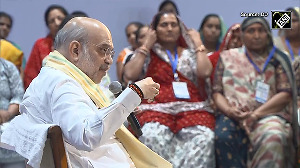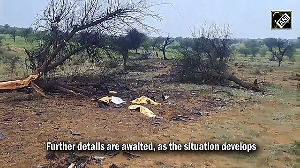Mass histrionics like the volley of indignant rage that burst out onto the streets of Delhi in the form of violence in response to the inhuman rape of a 23-year-old female student is polemics at its worst; a rhetorical high decibel vituperative that makes for sensational television cameos and screams to be splashed across the front page of newspapers, but one that does precious little to provide a lasting solution to an intractable problem; a scathing knee-jerk indictment of gubernatorial indifference and negligence sans the insight that the government, though definitely culpable to a great degree, is not the sum total of the panacea that is warranted to reign in this human depravity.
Agreed, the government needs to be more sensitive to the needs of women. And the government can certainly be more proactive to ensure security to women at all times and in all locations by continuous monitoring of public places and imposing stringent laws that guarantee their safety on public conveyances. However, it would be naïve and unrealistic to believe that the government wields a magic wand and can make rapes disappear with the utterance of an 'abracadabra'.
The public protests that appear at the outset to be a government-centric outburst is in reality a much wider castigation: a jibe at the male for his boorishness and outright criminal behaviour; a telling statement about the lack of refinement in our society as a whole.
Rape represents a broad failure of human society; the ultimate fear in the spectrum of a wide range of insecurity that Indian women encounter in daily life from the seemingly harmless unwelcome nudge encountered on the bus ride to work to the uncouth audacious catcalls from across the street.
The current wave of protest, like almost every public dialogue in India, has a tendency to invariably degenerate into a clash of personalities that usurps centerstage and relegates the issue at hand to the backburner. Let us stop the cantankerous bickering between the public and the government, the public and the police, and the Union government and state functionaries to conceive a comprehensive united effort that will result in tangible results.
While stringent punition is certainly a component of deterrence, the focus of anti-rape measures must be preventive.
Sexual violence is a phenomenon that is multifaceted in its etiology with a wide range of triggers that can be biological, psychological, cultural, social or political. The World Health Organisation's World Report on Violence and Health (Dahlberg and Krug, 2002) postulates an ecological approach that factors in these various etiologies to come up with a comprehensive plan to counter sexual violence, and is a blueprint used by several countries.
This approach recommends intervention at four levels to decrease the incidence of sexual violence. Below is a limited overview of this approach:
Individual Level: Factors like alcohol and drug abuse known to be catalysts for sexual violence need to be addressed, especially their abuse in public places. The fact that the perpetrators of the current tragedy were drunk at the time of its occurrence highlights this necessity.
Interpersonal Relationships: Based on the assumption that close personal relationships shape an individual's behaviour, intervention at this level includes facilitation of greater interaction between the sexes in their formative years and counselling of young boys and young men to eradicate traditionally held concepts of machismo. Union Women and Child Development Minister Krishna Tirath's proposal to launch a new scheme, the Rajiv Gandhi Scheme for Empowerment of Adolescent Boys, aimed at building character of adolescent boys and changing their mindset towards women is an example of this.
Community Level: Strict sexual harassment policies in workplaces will send out a message of zero tolerance for such infractions.
Society Level: Indian society is fortunate to have a civilisational tradition that celebrates a women's honour but appears to have lost it somewhere along the way. Our great epic the Mahabharata centres on a battle to salvage the honour of a woman disrobed in a royal court. And in the Ramayana, Sri Lanka had to suffer total devastation because its king dared to sully the purity of the divine maiden, Sita. These instances should be repeatedly emphasised to effect a change in behaviour. Mass media can be used to promote societal norms that prevent such acts.
But plans and government diktats are only good as the paper they are printed on sans effective implementation. Transient demonstration of public outrage including the current protest that is more prolonged than most merely serve to highlight an issue. Government promises extracted in the heat of the moment tend to fizzle out with time. Public protest is the first salvo. We need to move beyond public protest to the next phase to achieve results, namely the practical translation of preventive measures and monitoring of the effectiveness of new and existing measures.
That is where civil society comes into play. Constant vigil is the name of the game: continuous oversight to keep delinquent governments in check and security personnel on the alert; and constant monitoring to gauge the effectiveness of interventions. A rape meter with rape statistics conspicuously printed on the front page of newspapers on a monthly basis will go a long way to sustain public awareness and efforts -- the key drivers for lasting success. Only then will rape become a rarity.
Now that the 23 year-old-girl is no more, we must be doubly determined to carry out this task to fruition to prove that her life was not lost in vain.




